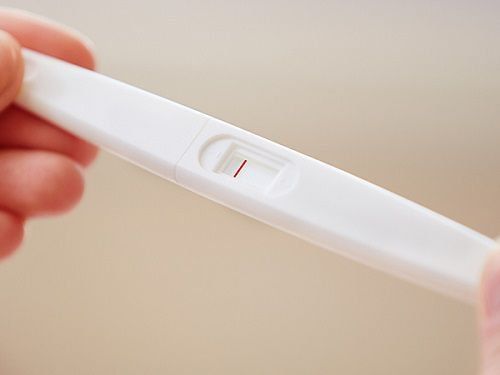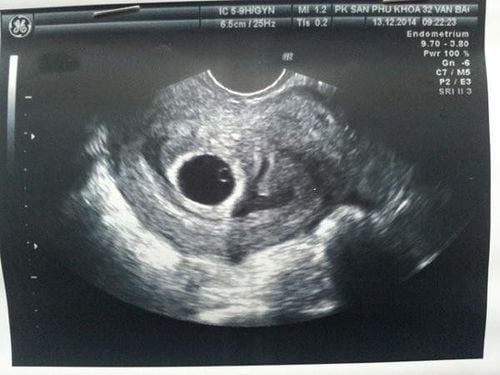The article is professionally consulted by Obstetricians and Gynecologists - Department of Obstetrics and Gynecology - Vinmec Hai Phong International General Hospital.
An incomplete miscarriage, also known as an incomplete abortion, is a condition where a miscarriage occurs, but part of the fetus remains in the uterus. During a vaginal examination, blood is seen flowing out with the examining finger, the cervix is open, and the uterine mass is smaller than the gestational age.
1. What is an incomplete miscarriage?
An incomplete miscarriage, also known as an incomplete abortion, is a case where part of the fetus and placenta remain in the uterus and have not been expelled. Typically, a fetus before 10 weeks, when miscarried, is usually expelled entirely, but after 10 weeks, the fetus and placenta often separate. The patient experiences continuous bleeding, sometimes severe, but rarely leads to death.
There are many causes of incomplete miscarriage, which can be due to the fetus, abnormalities in the mother's body, or environmental factors:
Causes related to the fetus:
- The fetus has chromosomal abnormalities. Studies on the karyotype of miscarried fetuses show that 50-85% of miscarriages are due to chromosomal disorders. Common chromosomal disorders include abnormalities in chromosomes 6, 12, 13, 16, 17, 18, 21, or sex chromosomes, or forms such as monosomy, triploidy, mosaicism, etc.
- Abnormal implantation of the fetus, implantation in the corner or isthmus, which is prone to miscarriage. Twin pregnancies, triplets, polyhydramnios, complete or partial molar pregnancies also increase the risk of miscarriage.
Causes related to the mother:
- The uterine lining does not develop, hormonal imbalances, especially in women with adrenal or thyroid gland disorders.
- The mother has an acute infection that causes the fetus to die due to infection, or the infection increases body temperature, causing uterine contractions and miscarriage.
- The mother experiences trauma due to abdominal injury or surgery.
- The mother uses tobacco, alcohol, caffeine-containing stimulants, or intrauterine contraceptive devices.
Environmental causes:
- Living in a polluted environment with smoke, tobacco, noise, pesticides, working with high intensity, stress, fatigue, etc., for a long time can cause the mother to miscarry.

2. Signs of incomplete miscarriage
When an incomplete miscarriage occurs, the pregnant woman will have the following signs:
- Vaginal bleeding: Vaginal bleeding can occur suddenly and become more severe within a few hours. The patient may pass blood clots or tissue fragments expelled from the vagina.
- Severe lower abdominal cramps: The lower abdomen experiences severe cramps, uterine contractions occur, and the patient may have cramps.
- During an ultrasound or routine prenatal check-up, the fetus is found to have died, but there are no signs of miscarriage. During a vaginal examination, the cervix is open, blood flows out with the examining finger, and the uterine mass is smaller than the gestational age.
When an incomplete miscarriage occurs, the pregnant woman is at high risk of infection. The bleeding usually lasts longer than a complete miscarriage and, if not treated promptly, can significantly affect health. Therefore, when there are signs of incomplete miscarriage, the pregnant woman should immediately go to a medical facility for timely intervention.

3. Treatment Methods for Incomplete Miscarriage
For incomplete miscarriages, it is possible to wait for a natural miscarriage, which is successful in 80% of cases. Using additional medications to enhance uterine contractions, such as Mifepristone and Prostaglandin E1, will increase the success rate.
Additionally, the doctor may perform cervical dilation and then use instruments to clean out the remaining fetal tissue in the uterus. The doctor will base the treatment on the patient's overall condition, gestational age, and the dilation or opening of the cervix. This is a relatively safe procedure, but in some rare cases, the patient may experience complications such as bleeding, infection, or uterine injury.
During treatment, the patient should spend a lot of time resting, avoid excessive movement, and follow a nutritious diet to quickly recover health. Additionally, it is important to adhere to the doctor's treatment regimen and attend regular follow-up appointments. Miscarriage is something no one wants, and the causes of miscarriage are sometimes beyond the mother's control, so mothers should not blame themselves. Focus on relaxing, resting, thinking positively, doing things you enjoy, eating well, and giving your body time to recover to be able to conceive again.
To arrange an appointment, please call HOTLINE or make your reservation directly HERE. You may also download the MyVinmec app to schedule appointments faster and manage your reservations more conveniently.













